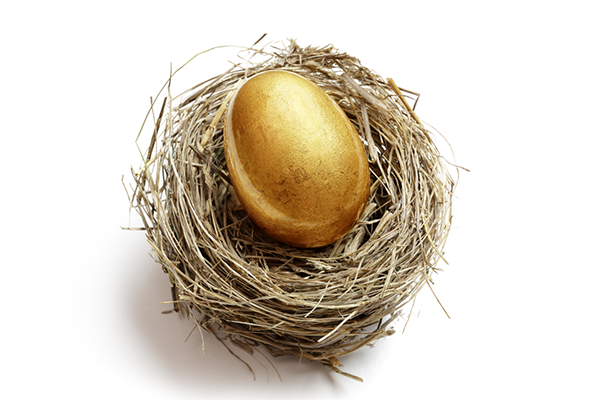Pensions remain a bigger share of wealth than property
7th January 2022 12:00
by Rebecca O'Connor from interactive investor
interactive investor comments on the ONS Wealth in Great Britain report.

The Office for National Statistics this morning issued a report on Household Total Wealth in Great Britain: April 2018 to March 2020.
It found that median net household wealth, which includes property, private pension, other assets and savings and investments, increased very slightly to £302,500 over the period. Wealth inequality has remained stable over the last 14 years, with the richest 1% having wealth of £3.6 million and the least wealthy 10% having £15,400 or less.
Private pension wealth has represented a greater share of total wealth than property wealth since 2008 to 2010, according to the ONS, a dynamic that has not changed despite relatively high house price growth in recent years.
Both property and pensions together make up three-quarters of all wealth, but over the last 14 years, partly down to lower levels of home ownership among younger people, the introduction of auto-enrolment and the increase in the state pension age, private pension wealth as a proportion of all wealth has increased from 34% in 2006-2008 to 42% in 2018 to 2020, while property wealth fell to 36%, from 42% over the period, the ONS found.
Commenting on the report, Becky O’Connor, Head of Pensions and Savings, interactive investor, said: “Property gets a lot of glory, but pensions can be the quiet secret to wealth accumulation. Thankfully, because of auto-enrolment, more people are in on them than ever, giving access to long-term investment growth at a time when property price growth has meant the barriers to entry for home ownership have risen.
“Unfortunately, much of the pension wealth in the UK is in the form of generous defined benefit pensions, which many older people still have, but are quickly disappearing. It will be harder for younger workers with defined contribution pensions to build their wealth up to such levels.
“All forms of wealth are not equal and can serve different purposes and give different kinds of material comfort. You can live in a house, but you can live on a pension. Some people in the UK now find themselves ‘asset rich’ and living in a valuable home, but cash poor, with low income to actually cover living costs, perhaps through not having sufficient pension income. Ideally, of course, you’d like both.”
The proportion of women with no active pension has fallen from 68% in 2006-08 to 58% in 2018-20. For men, the proportion without an active pension had fallen from 59% to 52% over the same period. The proportion of younger workers with defined contribution pensions has risen significantly, for example, 35% of 25- to 34-year-olds now have defined contribution pensions, up from 13% in 2006 to 2008.
However, the importance of defined benefit pensions featured heavily when comparing the pension wealth of employees and the self-employed. The ONS found households with employee heads had higher levels of pension wealth than the self-employed, which was most likely driven by higher participation in private pensions (94% had private pension wealth compared with 79% for self-employed). This group also held larger pension pots on average, a consequence of defined benefit pensions being available to employees but not for the self-employed, the ONS said.
Pension wealth: ONS
Private pension wealth (ONS) | Employee | Self-employed | Inactive/ other unemployed | Retired |
Median (£) | 78,000 | 35,000 | 0 | 123,500 |
Mean (£) | 251,600 | 184,500 | 65,400 | 312,100 |
Mean: median (measure of inequality where higher number means more inequality) | 3.23 | 527 | - | 2.53 |
Source: ONS
Median wealth of households with a ‘head’ aged 55 to under the state pension age was the highest by age category and 25 times higher than for those aged 16- to 24-years-old. Median wealth was highest in the South East at £503,400 and lowest in the North East at £168,500. The North East, Scotland and London all saw decreases in wealth compared to the previous period, with rises in the East and West Midlands.
The report also found households where the head was retired were the wealthiest group (£489,300); three-quarters of this group own their own homes outright. They also had lower expenditure and a more stable primary income source, the ONS said.
These articles are provided for information purposes only. Occasionally, an opinion about whether to buy or sell a specific investment may be provided by third parties. The content is not intended to be a personal recommendation to buy or sell any financial instrument or product, or to adopt any investment strategy as it is not provided based on an assessment of your investing knowledge and experience, your financial situation or your investment objectives. The value of your investments, and the income derived from them, may go down as well as up. You may not get back all the money that you invest. The investments referred to in this article may not be suitable for all investors, and if in doubt, an investor should seek advice from a qualified investment adviser.
Full performance can be found on the company or index summary page on the interactive investor website. Simply click on the company's or index name highlighted in the article.